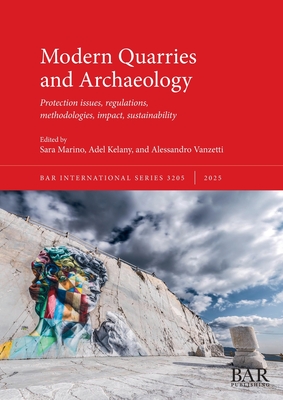Modern Quarries and Archaeology: Protection issues, regulations, methodologies, impact, sustainability

Modern Quarries and Archaeology: Protection issues, regulations, methodologies, impact, sustainability
The recent and historical development of quarries has had significant impacts on landscapes, biodiversity and non-renewable resources, including on archaeological heritage. The analysis of the past and present impact of modern quarries and the assessment of the threats they pose to the landscape and underlying palaeontological or archaeological remains are key issues in the holistic protection of cultural heritage. The book aims to discuss varied international regulations concerning this topic, and provides examples of different approaches and methodologies used to manage the complex relationship between quarries and archaeology. The papers present case studies mostly derived from preventive archaeology, but also focused on non-direct and non-destructive surveys on the landscape, such as aerial and satellite remote sensing, or on archival and bibliographic documentation. The goal is to understand how the problem is currently managed globally, and if best practices and shared strategies can be identified and applied to create future methodological and operational trajectories.
529.07Lei
529.07Lei
Livrare in 2-4 saptamani
Descrierea produsului
The recent and historical development of quarries has had significant impacts on landscapes, biodiversity and non-renewable resources, including on archaeological heritage. The analysis of the past and present impact of modern quarries and the assessment of the threats they pose to the landscape and underlying palaeontological or archaeological remains are key issues in the holistic protection of cultural heritage. The book aims to discuss varied international regulations concerning this topic, and provides examples of different approaches and methodologies used to manage the complex relationship between quarries and archaeology. The papers present case studies mostly derived from preventive archaeology, but also focused on non-direct and non-destructive surveys on the landscape, such as aerial and satellite remote sensing, or on archival and bibliographic documentation. The goal is to understand how the problem is currently managed globally, and if best practices and shared strategies can be identified and applied to create future methodological and operational trajectories.
Detaliile produsului










